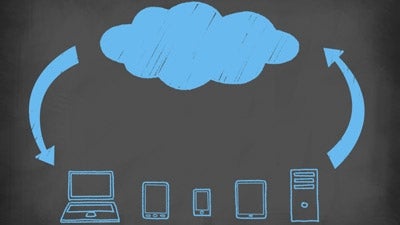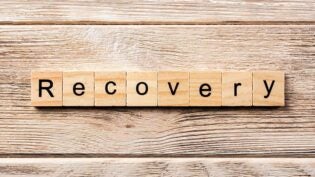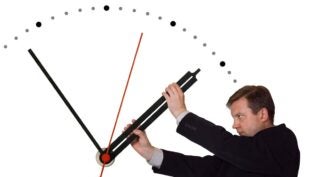Home > Technology > Tech Reviews >
A Cloud-Based Expansion to the Memory Storage of Your Brain
By: Danny Iny

If you don’t know what Evernote is, the core idea is a cloud-based Note system. Think like sticky notes, but digital and they can be accessed from almost any device that has an internet connection.
Back when paper was a more valued resource, what would you use sticky notes for?
A quick memo?
A recipe?
Maybe a quick shopping list you jot down after lunch.
It doesn’t matter because that is the point of a sticky note. A quick bit of information.
With a physical piece of paper, especially something intended for a short lifespan, it will inevitably get thrown out. Since Evernote lives in the cloud the notes never have to go away. Just imagine keeping every sticky note you’ve ever used.
Now I know what you are thinking: “I wouldn’t want to collect festering heaps of old sticky notes!” I agree. And neither does your brain. We forget things as humans. Think of your brain’s sticky notes for everything it needs to do.
A sticky note for walking. One for breathing. Even something as mundane as how to grow the toenails.
Obviously, certain things are more complex than others. The sticky note for playing a drum solo would have much more information than the sticky note to write your name.
Before you think this is going nowhere, remember this post is to show you how to implement Evernote as a cloud-based expansion to your brain’s memory storage. Since Evernote is digital, you CAN have notes that are more complex than others. The “which bills have been paid” note is more involved than the one with a code snippet to make radio buttons horizontal.
I’m not a brain doctor, but I did study artificial neural networks in graduate school. It is what it sounds like; mathematical models to mimic how the connections in living brains work.
When it comes to these models learning things there is a saying, “That which fires together, wires together”. If a baby wants to pick up a cup, its brain has to get the right sequence of muscle movements to succeed. The more he or she does this, the stronger and more defined those muscle movements are.
Here is how this idea of firing and wiring together fits into Evernote. Each note can be assigned one or more tags; a tag is like a list or a group. Or…
A Connection in Your Head
Think about it. When you want to remember stuff from when you were a child, your brain “knows” where to reference this in your head. The location of these memories is probably different than the location of how to change a car tire. Unless you learned this as a kid, then maybe it is closer to where kid memories are stored.
In order to use Evernote as an extension of your own brain, you must tag each note with at least 2 tags. Why? Because when you need a piece of information, you can come to the same knowledge from different angles.
Take my code snippet note from earlier. I’ve got this tagged as “code”, “css”, “form”, and “radio button”. I KNOW that I know how to make radio buttons horizontal and I trust that when there is a need to pull that information I’ll make my way to it through one of those tags. Brain hacking for the win.
I need to pause for a moment to very explicitly point out that in order to use Evernote in this manner, you must TRUST the system of tags you setup and will continue to setup.
If you follow Chris Brogan’s newsletter, he recently gave a 5-step formula for how to make simple processes effective. The last step is basically “Trust the Process.” To use Evernote as an organic cheat code for your brain, you have to allow yourself to trust yourself.
Look at those four tags again: “code,” “css,” “form,” and “radio button.” You think I’ll get the info I need through one of those tags when I want to remember how to tweak radio buttons?
Alright, enough light airy fluff. If you buy into the idea of using Evernote to make your brain superhuman, do these things:
- Get an evernote if you don’t have one
- Start putting things in there
- Tag them with a little foresight as you go
- Reference your notebook often
- Build your brain’s memory
If you already have an Evernote, start at step 3 with your current notes. Be forward thinking about the tags you use. Is this type of information something you’ll reference often? Like my bill tracking note (which is tagged as “Bills”). Does it fall into a grouping of knowledge? For example, I have an “analytics” tag for the different solutions I’ve found that do digital analytics.
Be mindful of tag proliferation, or lots and lots of tags. Don’t get me wrong, the more you use this, the more tags you’ll build. Watch out for redundancies unless you want to build those in intentionally because you know yourself. For example, having an “Audio” and a “Sound” tag may be redundant for some people, and be two totally different meanings for others. The trick with trusting a system like this is step 4; going back to retrieve information often.
When you first get started, you’ll want to be really aware as you write or type something that you may want to reference later. Quickly, throw it in a note. Get good at identifying those things. Soon you’ll have a little interrupt in your head that pauses and says, “I should put this in an Evernote”. Then actually do it.
For example, I have a note listing all the stuff I need to buy for my house. Toilet paper, cleaning supplies, stuff like that. Before this I’d find myself remembering that I need to buy something and then forget to buy it at the store. Now, when I’m at the store, I don’t have to fumble with that information. Pull out the smart device and look at my notebook because when I think of something to buy I’ll just throw it on that note and forget about it. After shopping, I’ll delete the items purchased.
The point I’m trying to make is stop filling up your brain’s capacity with things it doesn’t REALLY need to remember. Loosen up the bandwidth so you can focus on the important things. No need to remember what the button sequence to switch to the vacation greeting on your work phone is. You have a note for that.
How Can You Use This In Your Business
As I’m sure you can attest, people forget things. Processes with multiple or precise steps can be challenging to remember yourself, must less delegate to someone else.
To fix this, create a note for these processes. Tag it accordingly. Did I mention that you can have different notebooks and share those with others? Well you can. Share those notebooks with people who need that information. Maybe tag these with “Processes” or “Workflows” along with some more intention specific ones.
Writing or creating content?
Write drafts and make edits in a note until you are ready to put it in the final form (Word doc, InDesign, etc). Don’t worry too much about formatting the note inside Evernote because that will probably go away when you migrate the information. Maybe tag as “Posts” or “Infographics” or whatever makes sense to you along with a topic tag.
Have templated emails you use a lot?
Put each one in a note. You could tag these as “Swipe” or “Email Templates” along with tags for the intended audience. You could even use Evernote as a basic customer database if you really wanted.
Can this work for everything in your business? Nope. There will always be things you can’t house in Evernote. However, the fewer systems you can use the better. Less multi-system chaos. Work towards making Evernote your business’ central system for knowledge and only introducing other systems if absolutely necessary.
Need a knowledge base?
What about creating a publicly viewable notebook and have people curate that? Super lean and effective!
You might even be able to replace certain services. For example, maybe you have a bookmarking service that you use just to store URLs and nothing else; you don’t use any other bells or whistles the service offers. Migrate those bookmarks into one or more notes. This way you are cutting the fat from your ecosystem of tools while retaining all knowledge.
Lastly, you’ll want to do an Evernote cleanse every once in a while because just like a post-it note (and just like our own memories) they will need to be discarded someday. You can schedule this or just perform as needed but you should be doing this periodically.
If you do nothing at all, I at least hope you can take away this idea:
By re-routing information from your brain to Evernote and tagging those notes in a manner you trust, you can build a cloud-based expansion to your head’s own memory storage.
What Now?
Share a comment below then go sign up for Evernote if you don’t have one. For current users, what do you think? What ways have you found to use Evernote in your personal and business life? And if you disagree with me, please share your point of view as well.
This article was originally published by Firepole Marketing
Paul Sokol is an electrical engineer by trade and the Campaign Builder Mad Scientist at Infusionsoft – a moniker earned due to his breadth of knowledge. He has logged over 1,000 hours of success coaching and helped launch 200+ clients with InfusionSoft. With a passion for music, skateboarding and life in general he loves being given a challenge (and figuring out a solution). When it comes to being efficient, he champions anything to streamline processes!
Published: August 27, 2013
2909 Views
2909 Views










